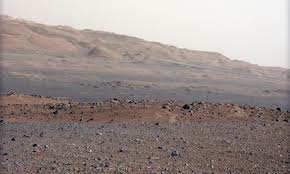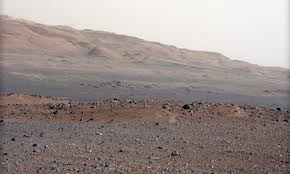A few days ago the weather report from Gale Crater measured air temperatures in the afternoon at 6 Celsius (43 Fahrenheit). What is even more surprising is Gale Crater is still in the winter season on Mars. And the 6 degrees measured on October 1 was not an anomaly. Temperatures at Gale since Curiosity landed have been above freezing for more than half the time.
For scientists who have stated that Mars is too dry and cold to host life, these warm temperatures suggest at least that the climate is not too cold. If the warming trend follows into the summer months, Gale Crater may see mid-day temperatures around 20 Celsius (68 Fahrenheit).
Night time temperatures on the other hand are brutal. Curiosity has measured temperatures as low as minus 70 Celsius (minus 94 Fahrenheit). Mars experiences extremes in temperatures because of the thinness of its atmosphere. Air pressure is very low and varies daily between 685 and 780 pascals. Compare that to sea level atmospheric pressure on Earth at 101,325 pascals, 140 times greater than the Martian atmosphere at Gale Crater. It is the thinness of the Martian atmosphere that makes it nearly impossible for water to remain in a liquid state.
Fortunately for us here on Earth, being so much closer to the Sun than Mars means we get significantly more radiation which means even though today may be cold here in my home town of Toronto, in another six months I can look forward to a spring that is filled with growing things. For Mars the wind whistles stirring up dust storms, carbon monoxide snow falls to the ground, and so far in our exploration nothing beyond microbial appears to be alive today on the planet’s surface.










